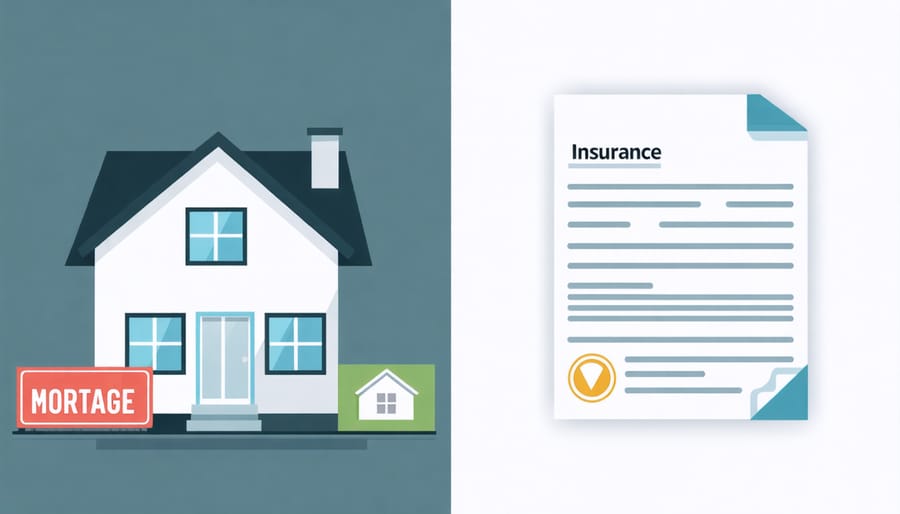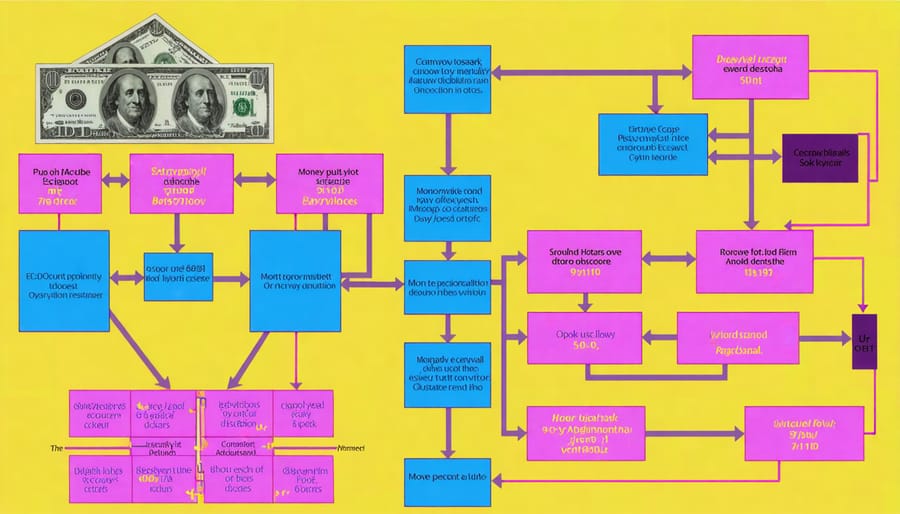Contrary to common belief, homeowners insurance isn’t automatically built into your mortgage—but they’re inextricably linked in the home-buying process. Every mortgage lender requires homeowners insurance coverage before closing, making it a non-negotiable component of homeownership. While the insurance isn’t technically “built in,” most lenders establish an escrow account that combines your monthly mortgage payment, property taxes, and insurance premiums into a single payment for convenience and risk management.
Understanding this relationship is crucial for first-time homebuyers and seasoned property owners alike. Your mortgage servicer typically handles the insurance payments through your escrow account, ensuring your property remains protected throughout the loan term. This arrangement protects both the lender’s investment and your financial interests, though you maintain the freedom to choose your insurance provider and coverage levels within your lender’s minimum requirements.
This streamlined payment system helps prevent insurance lapses and simplifies homeowners’ monthly financial obligations, but it’s essential to understand that you’re still purchasing a separate insurance policy distinct from your mortgage agreement.
The Relationship Between Mortgages and Insurance

Why Lenders Require Insurance
Lenders require homeowners insurance for a simple but crucial reason: they need to protect their financial investment in your property. When you take out a mortgage, the lender is essentially investing hundreds of thousands of dollars in your home. Until you’ve paid off the loan, they have a significant financial stake in the property’s well-being.
Think of it this way: if your home is destroyed by fire or severely damaged by a natural disaster, and you don’t have insurance, you might struggle to continue making mortgage payments while also paying for repairs. This scenario poses a substantial risk to the lender’s investment. By requiring insurance coverage, lenders ensure that their investment – your home – is protected against potential disasters.
Moreover, most mortgage agreements include specific insurance requirements, including minimum coverage amounts and types of coverage. This isn’t just about being cautious; it’s a standard practice regulated by federal law for most mortgage types. Lenders typically won’t close on a mortgage without proof of adequate insurance coverage, making it a non-negotiable aspect of the home-buying process.
Insurance as a Mortgage Condition
When you secure a mortgage, lenders typically require homeowners insurance as a non-negotiable condition of the loan. This requirement exists because the property serves as collateral for the mortgage, and lenders need to protect their financial investment. Most mortgage agreements explicitly state that maintaining adequate insurance coverage is mandatory throughout the loan term.
The insurance requirements are usually specified in detail within your mortgage documents, including minimum coverage amounts and acceptable deductibles. Lenders often require coverage that equals or exceeds the loan amount or the home’s replacement cost, whichever is greater.
If you fail to maintain required insurance coverage, your lender has the right to purchase force-placed insurance on your behalf and bill you for the premiums. This type of insurance typically costs more than standard homeowners policies and only protects the lender’s interests, not yours.
Before closing on your home, you’ll need to provide proof of insurance to your lender, usually in the form of a declarations page from your policy. Your lender will also be listed as a loss payee or additional insured party on the policy to ensure they’re notified of any changes or cancellations.
How Insurance Payments Work with Mortgages
Understanding Escrow Accounts
An escrow account acts as a financial intermediary that manages your property-related expenses, including your insurance payments and premiums and property taxes. When you set up an escrow account with your mortgage lender, they calculate your annual insurance and tax obligations, divide that amount by 12, and add it to your monthly mortgage payment.
This system offers several advantages for both homeowners and lenders. For homeowners, it simplifies budgeting by spreading large annual payments across monthly installments. Instead of facing a substantial lump-sum insurance payment once a year, you pay a smaller amount each month. The lender then ensures these critical payments are made on time, protecting their investment in your property.
Your mortgage servicer maintains detailed records of your escrow account, typically providing annual statements that show all payments made and any adjustments needed. These adjustments might occur if your insurance rates change or if there’s a shortage or surplus in the account. Lenders usually require a minimum balance in your escrow account as a buffer, often equal to two months of payments.
While some homeowners prefer to manage their insurance payments independently, many mortgage lenders require escrow accounts, especially for borrowers with less than 20% down payment. This requirement helps ensure that the property maintains adequate insurance coverage throughout the loan term.

Direct Payment Options
While escrow accounts are common, homeowners do have the option to pay their insurance premiums directly. This approach gives you more control over your insurance payments and can be particularly appealing if you prefer managing your own finances or want to earn interest on the money you set aside for insurance.
To handle direct payments, you’ll need to demonstrate to your lender that you can responsibly manage these obligations. This typically involves showing proof of insurance coverage and maintaining timely payments. Most insurance companies offer various payment options, including:
– Annual payments (often with a discount)
– Semi-annual payments
– Quarterly payments
– Monthly payments (may include small service fees)
To successfully manage direct payments, consider setting up a dedicated savings account for your insurance premiums. Deposit one-twelfth of your annual premium each month to ensure you have sufficient funds when payments are due. Many homeowners find automatic transfers helpful in maintaining this discipline.
Remember that choosing direct payments means taking on more responsibility. You’ll need to:
– Keep track of due dates
– Maintain proof of coverage
– Submit documentation to your lender
– Handle any premium increases independently
– Ensure continuous coverage to protect your mortgage agreement
Before opting for direct payments, carefully evaluate your financial management skills and consider whether the additional responsibility aligns with your lifestyle.
Key Considerations for Homebuyers
Coverage Requirements
When securing a mortgage, lenders typically enforce specific minimum coverage requirements to protect their financial investment in your property. Most mortgage lenders require coverage that equals or exceeds the loan amount or the replacement cost of the home, whichever is greater.
The standard requirements usually include:
– Dwelling coverage to protect the home’s structure
– Personal property protection
– Liability coverage
– Additional living expenses coverage
– Coverage for specific perils like fire, wind, and theft
Your lender may also require additional coverage based on your property’s location, such as flood insurance for homes in flood-prone areas or earthquake coverage in regions with seismic activity. It’s important to note that while lenders set minimum requirements, these might not always provide adequate protection for your specific needs.
The coverage amount typically needs to be sufficient to rebuild your home completely in case of a total loss. This amount might differ from your home’s market value or purchase price. Smart homeowners often opt for coverage beyond the minimum requirements to ensure comprehensive protection for their investment and personal assets.

Cost Planning
When planning your mortgage payments, it’s crucial to accurately budget for insurance costs alongside your principal and interest payments. Start by requesting insurance quotes from multiple providers at least 60 days before closing. This gives you a realistic estimate of monthly premiums to factor into your overall housing budget.
A good rule of thumb is to set aside approximately 1.5% to 3% of your home’s value annually for insurance costs. However, this can vary significantly based on factors like location, property type, and coverage needs. When calculating your monthly mortgage payment, add about one-twelfth of your annual insurance premium to get an accurate picture of your total housing expenses.
Remember to account for potential premium increases over time. Insurance rates typically rise annually due to inflation and changing risk factors. Building a buffer of 10-15% above your initial premium estimate can help prevent budget surprises. Also, consider setting up an emergency fund specifically for insurance deductibles and any coverage gaps.
If you’re using an escrow account, ensure your lender’s calculations align with actual insurance quotes to avoid shortages or overages in your monthly payment.
Common Mistakes to Avoid
When dealing with mortgage and homeowners insurance, several common mistakes can cost you time, money, and peace of mind. One frequent error is assuming that homeowners insurance is automatically included in your mortgage approval. While your lender requires insurance, you need to secure the policy separately.
Another pitfall is underestimating insurance costs when budgeting for homeownership. Many buyers focus solely on the mortgage payment without factoring in insurance premiums, leading to financial strain later. Similarly, some homeowners choose inadequate coverage levels to reduce monthly costs, leaving them vulnerable to significant out-of-pocket expenses if disaster strikes.
Failing to understand escrow accounts is another common mistake. Some buyers don’t realize that even if their insurance is paid through escrow, they’re still responsible for maintaining adequate coverage and reviewing their policy annually. Additionally, homeowners sometimes forget to adjust their coverage when making home improvements or acquiring valuable items, potentially leaving them underinsured.
Don’t fall into the trap of automatically accepting your lender’s recommended insurance provider without shopping around. While convenient, this might not offer the best rates or coverage for your specific situation. Lastly, missing insurance payments or letting policies lapse can trigger serious consequences, including force-placed insurance by your lender at much higher rates or even mortgage default.
While homeowners insurance isn’t technically built into your mortgage, it’s often included in your monthly mortgage payment through an escrow account. Understanding this relationship is crucial for smart homeownership. Remember that you have the freedom to choose your own insurance provider and can opt to pay insurance separately if your lender allows it. When planning your home purchase, factor in both insurance and mortgage costs, shop around for the best rates, and consider bundling policies for potential savings. Above all, ensure your coverage meets both your lender’s requirements and your personal needs for adequate protection. Taking time to understand these aspects will help you make informed decisions and maintain a secure investment in your home.